Copyright
Table of Contents
Preface
Objective-C to Swift
Audience
Organization of This Book
Conventions Used in This Book
Using Code Examples
Safari® Books Online
How to Contact Us
Acknowledgments
Chapter 1. Cocoa Development Tools
The Mac and iOS Developer Programs
Registering for a Developer Program
Downloading Xcode
Creating Your First Project with Xcode
The Xcode Interface
Developing a Simple Swift Application
Designing the Interface
Connecting the Code
Using the iOS Simulator
Testing iOS Apps with TestFlight
Chapter 2. Programming with Swift
The Swift Programming Language
Playgrounds
Variables and Constants
Types
Tuples
Arrays
Dictionaries
Control Flow
Switches
Functions and Closures
Using Functions as Variables
Closures
Objects
Inheritance
Initialization and Deinitialization
Properties
Protocols
Extensions
Access Control
Operators
Generics
Interoperating with Objective-C
Using Objective-C and Swift in the Same Project
Using Swift Objects in Objective-C
Using Objective-C Objects in Swift
Modules
Memory Management
Working with Strings
Comparing Strings
Searching Strings
Data
Loading Data from Files and URLs
Serialization and Deserialization
Design Patterns in Cocoa
Model-View-Controller
Delegation
Chapter 3. Applications on OS X and iOS
What Is an Application?
Applications, Frameworks, Utilities, and More
What Are Apps Composed Of?
Using NSBundle to Find Resources in Applications
The Application Life Cycle
OS X Applications
iOS Applications
The Application Sandbox
Application Restrictions
Notifications with NSNotification
Chapter 4. Graphical User Interfaces
Interfaces in OS X and iOS
MVC and Application Design
Nib Files and Storyboards
Structure of a Nib File
Storyboards
Outlets and Actions
How Nib Files and Storyboards Are Loaded
Constructing an Interface
Guidelines and Constraints
Building an App with Nibs and Constraints
Interfaces on iOS
Launch Screen Files
UI Dynamics
UI and Gravity
Snapping UI
Core Animation
Layers
Animations
Chapter 5. Closures and Operation Queues
Closures in Cocoa
Concurrency with Operation Queues
Operation Queues and NSOperation
Performing Work on Operation Queues
Putting It All Together
Chapter 6. Drawing Graphics in Views
How Drawing Works
The Pixel Grid
Retina Displays
Pixels and Screen Points
Drawing in Views
Frame Rectangles
Bounds Rectangles
Building a Custom View
Filling with a Solid Color
Working with Paths
Creating Custom Paths
Multiple Subpaths
Shadows
Gradients
Transforms
Chapter 7. SpriteKit
SpriteKit’s Architecture
Making an App That Uses SpriteKit
Working with SpriteKit Scenes
SpriteKit Nodes
Putting Sprites in Scenes
Responding to Touches
Working with Textures
Texture Atlases
Working with Text
Animating Content with Actions
Using Shape Nodes
Using Image Effect Nodes
Adding Physics to SpriteKit Objects
Adding Joints to SpriteKit Objects
Lighting SpriteKit Scenes
Constraints
Using Shaders in SpriteKit
Using SpriteKit Editor
Chapter 8. SceneKit
SceneKit Structure
Working with SceneKit
Adding a SceneKit View
Adding a Scene
Adding a Camera
Adding a 3D Object
Adding Lights
Animating Content in the Scene
Creating Text Geometry
Combining Animations
Working with Materials
Normal Mapping
Hit Testing
Constraints
Loading Data from COLLADA Files
Adding Physics to the Scene
Chapter 9. Audio and Video
AV Foundation
Playing Video with AVPlayer
AVPlayerLayer
Putting It Together
AVKit
AVKit on iOS
Playing Sound with AVAudioPlayer
Speech Synthesis
Working with the Photo Library
Capturing Photos and Video from the Camera
Building a Photo Application
The Photo Library
Chapter 10. iCloud and Data Storage
Preferences
Registering Default Preferences
Accessing Preferences
Setting Preferences
Working with the Filesystem
Using NSFileManager
File Storage Locations
Working with the Sandbox
Enabling Sandboxing
Open and Save Panels
Security-Scoped Bookmarks
iCloud
What iCloud Stores
Setting Up for iCloud
Testing Whether iCloud Works
Storing Settings
Handling External Changes
The iOS Counterpart
iCloud Storage
iCloud Storage on OS X
iCloud Storage on iOS
Document Pickers
Using iCloud Well
Chapter 11. Cocoa Bindings
Binding Views to Models
A Simple Bindings App
Binding to Controllers
Array and Object Controllers
A More Complex Bindings App
Chapter 12. Table Views and Collection Views
Data Sources and Delegates
Table Views
UITableView on iOS
NSTableView on OS X
Collection Views
UICollectionView on iOS
Chapter 13. Document-Based Applications
The NSDocument and UIDocument Classes
Document Objects in MVC
Kinds of Documents
The Role of Documents
Document-Based Applications on OS X
Autosaving and Versions
Representing Documents with NSDocument
Saving Simple Data
Saving More Complex Data
Document-Based Applications on iOS
Chapter 14. Networking
Connections
NSURL
NSURLRequest
NSURLSession
NSURLResponse and NSHTTPURLResponse
Building a Networked Application
Bonjour Service Discovery
Browsing for Shared iTunes Libraries
Multipeer Connectivity
Chapter 15. Working with the Real World
Working with Location
Location Hardware
The Core Location Framework
Working with Core Location
Geocoding
Region Monitoring and iBeacons
Locations and Privacy
Maps
Using Maps
Annotating Maps
Maps and Overlays
Device Motion
Working with Core Motion
Using the Built-in Altimeter
Using the Pedometer
Printing Documents
Printing on OS X
Printing on iOS
Game Controllers
App Nap
Authenticating Using Touch ID
Handoff
Chapter 16. EventKit
Understanding Events
Accessing the Event Store
Accessing Calendars
Accessing Events
Working with Events
Building an Events Application
User Privacy
Chapter 17. Instruments and the Debugger
Getting Started with Instruments
The Instruments Interface
Observing Data
Adding Instruments from the Library
Fixing Problems Using Instruments
Retain Cycles and Leaks
Using the Debugger
Setting Breakpoints
Inspecting Memory Contents
Working with the Debugger Console
View Debugging
The Testing Framework
Writing Tests
Writing Asynchronous Tests
Performance-Testing Blocks with Tests
Debug Gauges
Performance Optimization
Chapter 18. Sharing and Notifications
Sharing
Sharing on iOS
Sharing on OS X
Notifications
Registering Notification Settings
Push Notifications
What Happens When a Notification Arrives
Sending Push Notifications
Setting Up to Receive Push Notifications
Receiving Push Notifications
Local Notifications
Chapter 19. Nonstandard Apps
Command-Line Tools
Preference Panes
How Preference Panes Work
Preference Domains
Building a Sample Preference Pane
Status Bar Items
Building a Status Bar App
iOS Apps with Multiple Windows
Chapter 20. Working with Text
Internationalization and Localization
Strings Files
Creating a Sample Localized Application
Formatting Data with NSFormatter
Testing Different Locales
Formatting Numbers, Lengths, Mass, Energy, and Data
NSNumberFormatter
NSEnergyFormatter, NSMassFormatter, and NSLengthFormatter
NSByteCountFormatter
Detecting Data with NSDataDetector
TextKit
Index
About the Authors
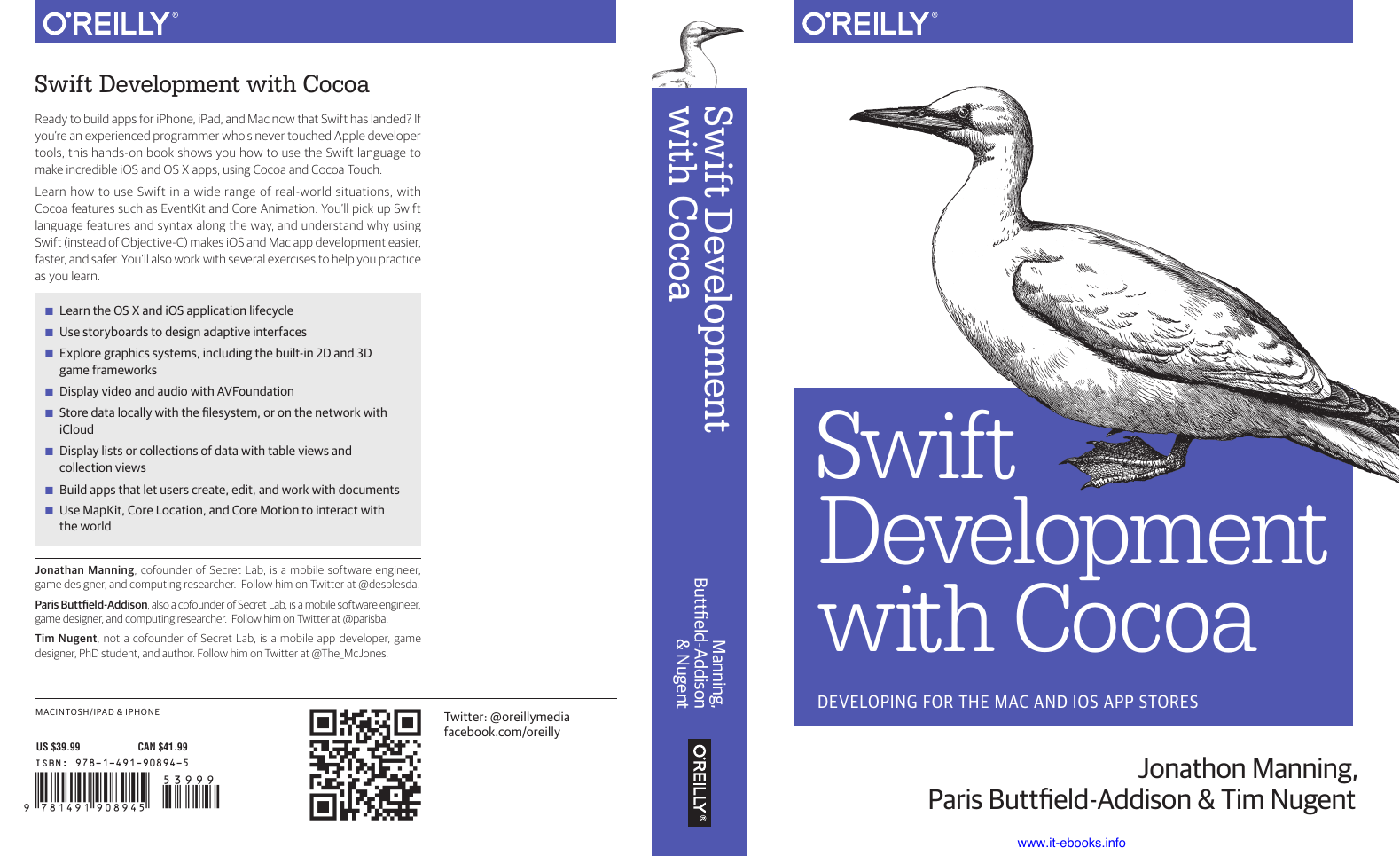
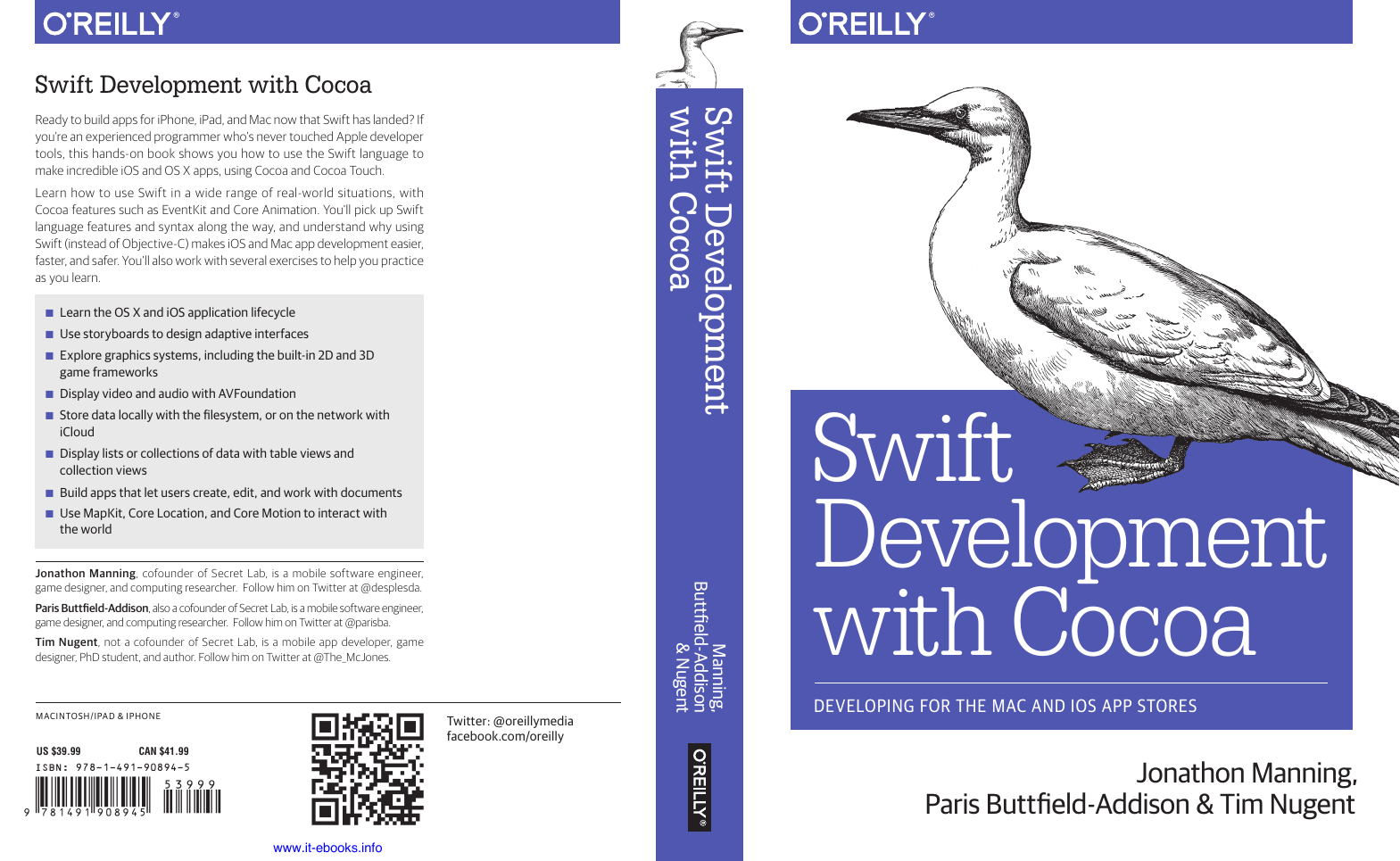
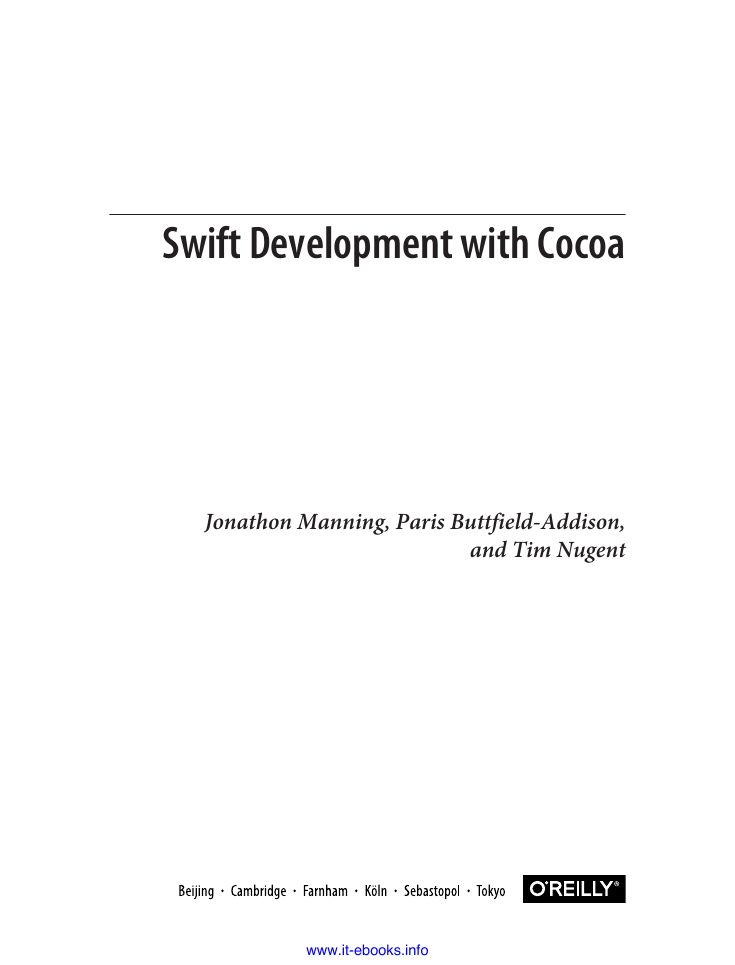
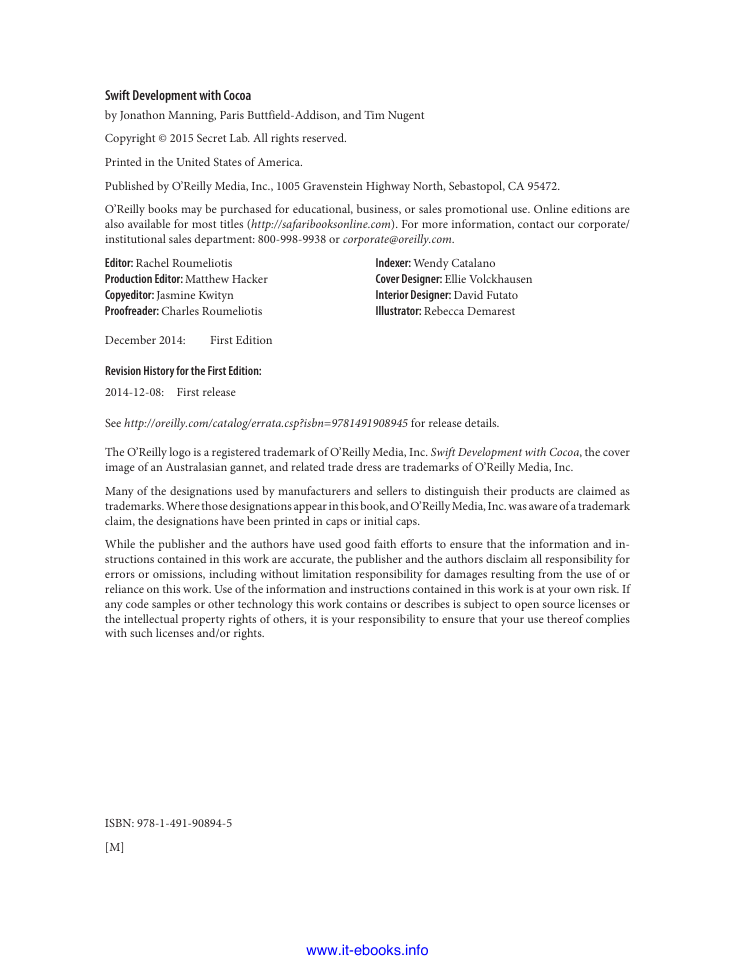
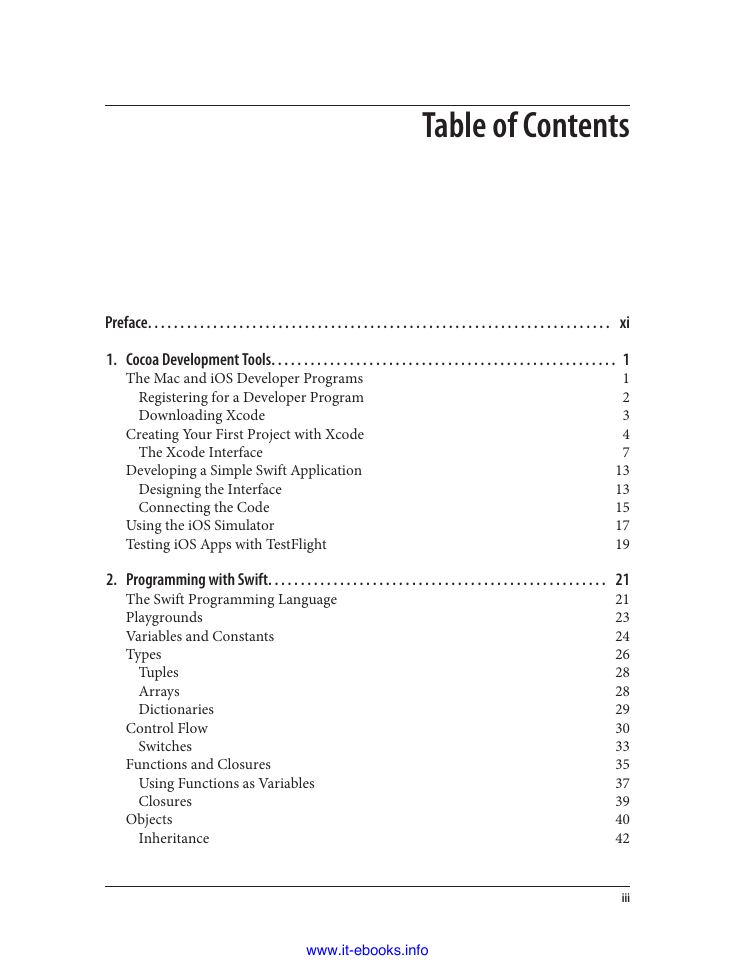
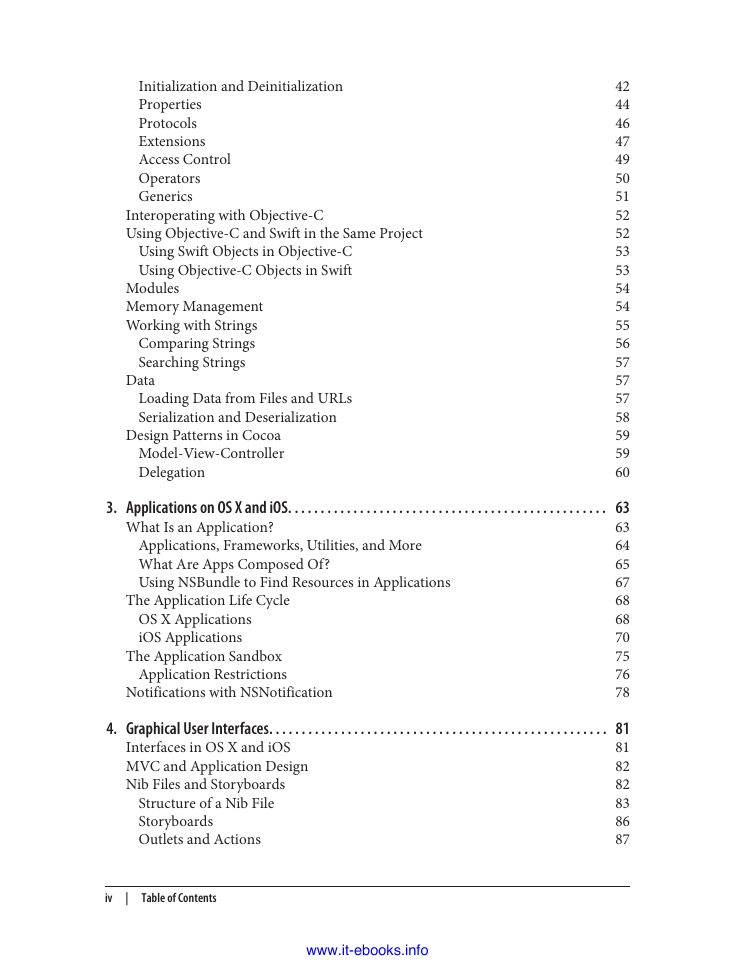

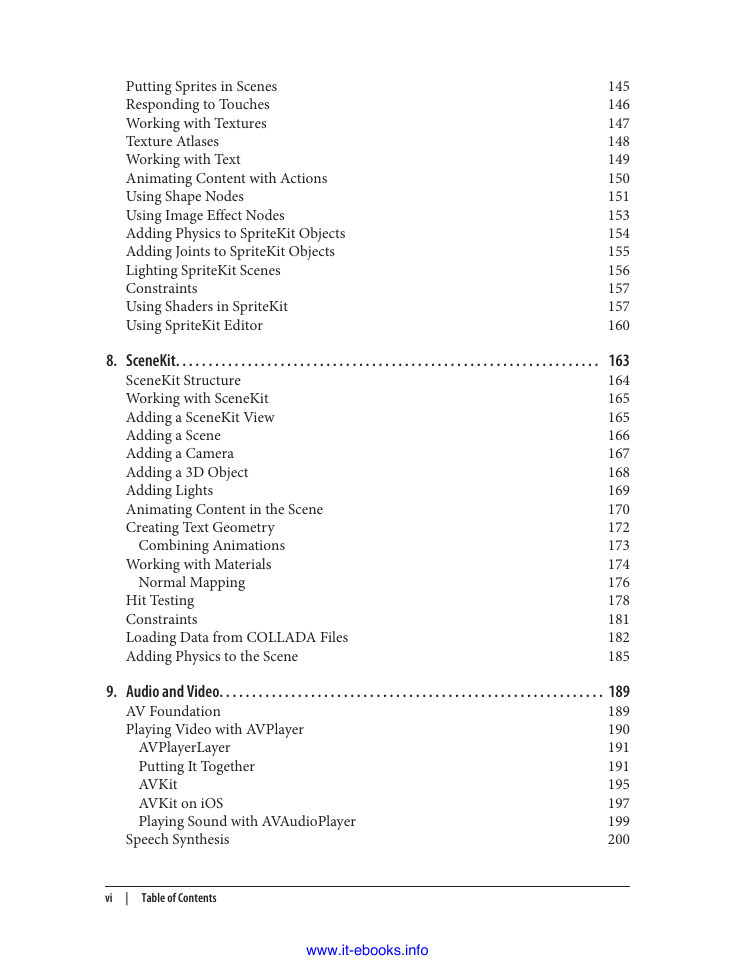








 2023年江西萍乡中考道德与法治真题及答案.doc
2023年江西萍乡中考道德与法治真题及答案.doc 2012年重庆南川中考生物真题及答案.doc
2012年重庆南川中考生物真题及答案.doc 2013年江西师范大学地理学综合及文艺理论基础考研真题.doc
2013年江西师范大学地理学综合及文艺理论基础考研真题.doc 2020年四川甘孜小升初语文真题及答案I卷.doc
2020年四川甘孜小升初语文真题及答案I卷.doc 2020年注册岩土工程师专业基础考试真题及答案.doc
2020年注册岩土工程师专业基础考试真题及答案.doc 2023-2024学年福建省厦门市九年级上学期数学月考试题及答案.doc
2023-2024学年福建省厦门市九年级上学期数学月考试题及答案.doc 2021-2022学年辽宁省沈阳市大东区九年级上学期语文期末试题及答案.doc
2021-2022学年辽宁省沈阳市大东区九年级上学期语文期末试题及答案.doc 2022-2023学年北京东城区初三第一学期物理期末试卷及答案.doc
2022-2023学年北京东城区初三第一学期物理期末试卷及答案.doc 2018上半年江西教师资格初中地理学科知识与教学能力真题及答案.doc
2018上半年江西教师资格初中地理学科知识与教学能力真题及答案.doc 2012年河北国家公务员申论考试真题及答案-省级.doc
2012年河北国家公务员申论考试真题及答案-省级.doc 2020-2021学年江苏省扬州市江都区邵樊片九年级上学期数学第一次质量检测试题及答案.doc
2020-2021学年江苏省扬州市江都区邵樊片九年级上学期数学第一次质量检测试题及答案.doc 2022下半年黑龙江教师资格证中学综合素质真题及答案.doc
2022下半年黑龙江教师资格证中学综合素质真题及答案.doc